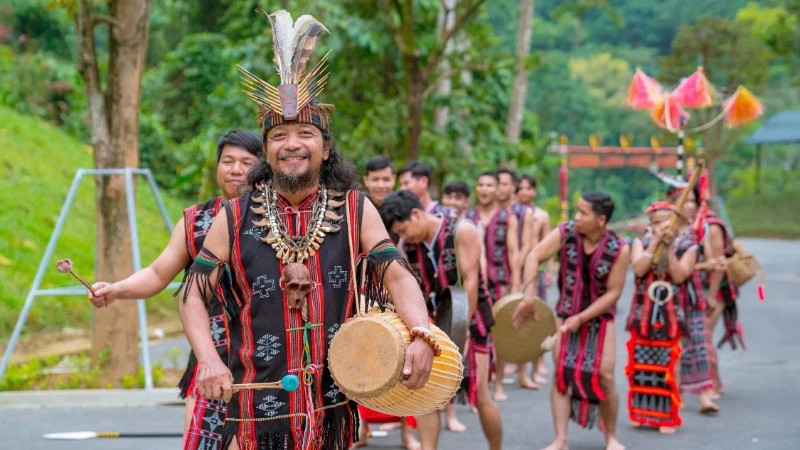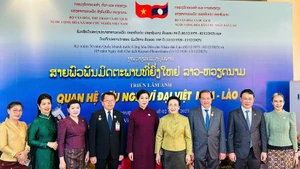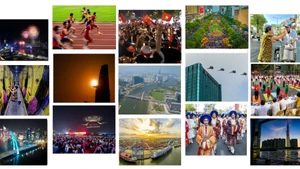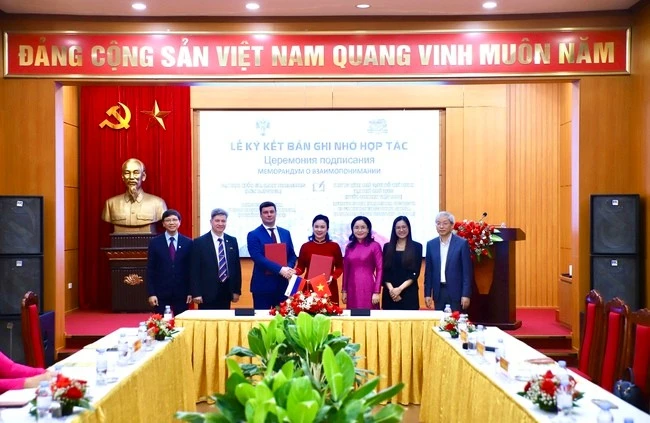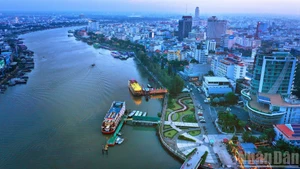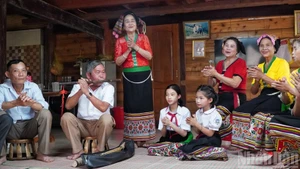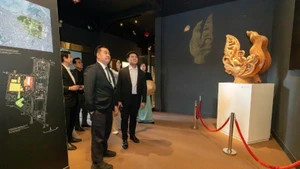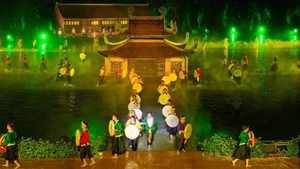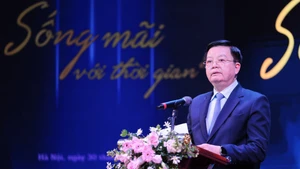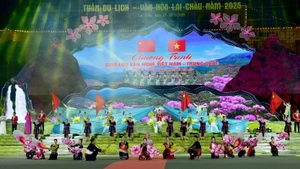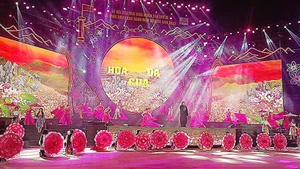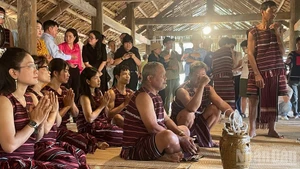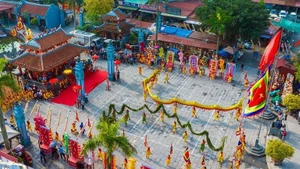Preserving traditional culture
Tra Kot Commune in Bac Tra My District is home to nearly 4,500 Cor ethnic people. There was a time when the Cor people here could no longer maintain their traditional customs, with their melodic folk songs and the unique gong competition gradually fading into obscurity.
However, over the past decade, the traditional cultural values of the Cor people have been gradually revived. This success is attributed to the efforts of Meritorious Artisan Duong Lai, who is now over 60 years old.
Born in Kot Village, Tra Kot Commune, artisan Duong Lai witnessed environmental influences and cultural exchanges which caused many ethnic Cor youngsters to no longer appreciate their traditional practices, such as gong playing, weaving, and traditional decorations.
Therefore, he resolved to take concrete actions to preserve and promote the cultural values of his ethnic group.
In Zuoih Commune, a border area in Nam Giang District, artisan Bhling Hanh from Cong Don Village has worked to safeguard and uphold his Co Tu ethnic cultural identity to future generations by collecting, teaching, and igniting passion among the youth.
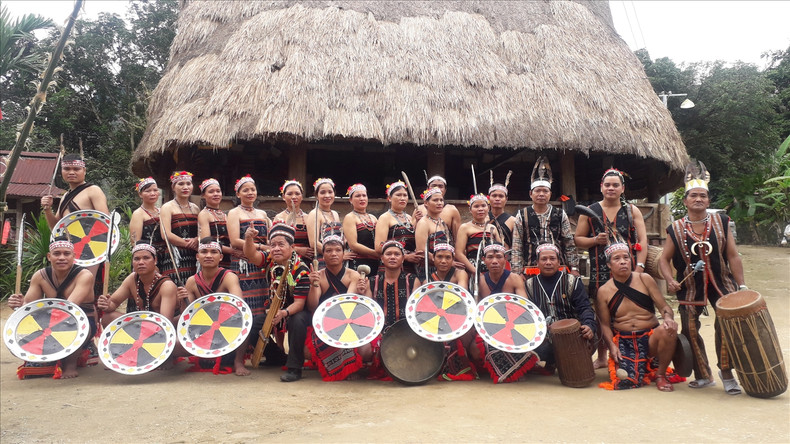 |
| Artisan Bhling Hanh (front row, fourth from left) and members of Cong Don Village's gong troupe (Photo: baodantoc.vn) |
According to Bhling Hanh, gongs are not only a source of pride the Co Tu people but also a language connecting humans with the supernatural world.
Currently, Quang Nam Province has nearly 150,000 ethnic minority residents, accounting for 9.3% of the total population. Among these ethnic minorities are four long-established groups with a total population exceeding 132,000: Co Tu, Xo Dang, Gie-Trieng, and Cor.
According to Ho Quang Buu, Vice Chairman of the Quang Nam Provincial People's Committee, the province has mobilised the entire political system to preserve and promote the time-honoured cultural values of local ethnic minorities.
In recent years, the provincial authorities have focused on preserving culture through village elders and community leaders who play a crucial role in uniting communities and enhancing solidarity among ethnic groups.
Developing community-based tourism
Over the past decade, Quang Nam has supported many communities in reviving traditional crafts and developing community-based tourism. This has created cultural spaces that attract domestic and international tourists to the province.
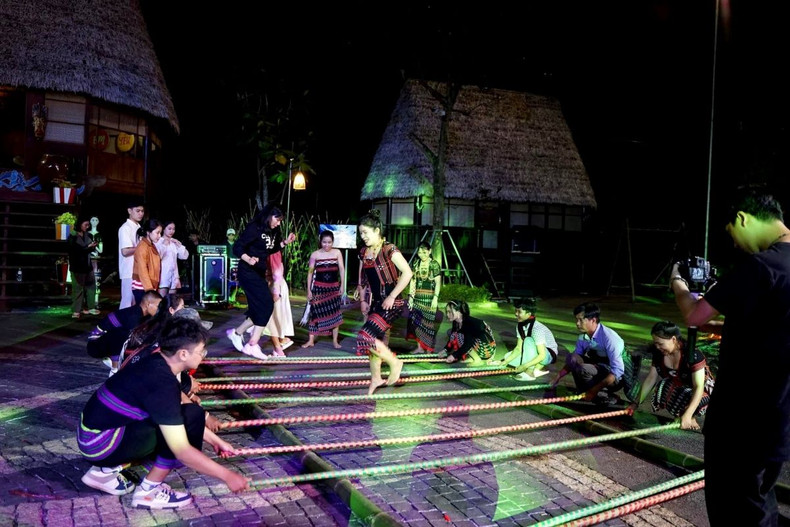 |
| Tourists join a bamboo pole dance at the Dong Giang Heaven Gate ecotourism site (Photo: vietnamtourism.gov.vn) |
Today, several tourist destinations have emerged in Quang Nam's mountainous districts such as Loc Yen Ancient Village (Tien Phuoc), Dai Binh Community Tourism Village (Nong Son), Co Tu Community-based Tourism Village, Zora Weaving Village (Nam Giang), Cao Son Cultural Village (Bac Tra My), Mo Chai Community-based Tourism Village (Nam Tra My), Ta Lang Community-based Village (Tay Giang), the Bhnong cultural preservation tourism area (Phuoc Son), and the Phuoc Tra historical site (Hiep Duc).
In addition to developing community-based tourism models, the province has also worked to attract investment in mountainous areas for community-based cultural tourism projects.
Prominent among them is the 800 billion VND Dong Giang Gateway Ecotourism Area, invested by Hang Gop Tourism Joint Stock Company under FVG Group.
Covering 120 hectares, this is the largest ecotourism area built in Quang Nam's mountainous region.
After nearly seven years of construction and two years of trial operation, the project officially commenced operations by April 2024, generating jobs for nearly 1,000 local Co Tu people.
Pham Thi Nghia, Deputy General Director of FVG Group stated that FVG Group recognise this region's ecological and cultural diversity for creating unique tourism products.
She emphasised that besides natural ecosystems, it also preserves many tangible and intangible cultural values of ethnic minorities living along the Truong Son mountain range.
To harness potential for mountain tourism development, the Quang Nam provincial authorities have issued numerous policies for planning infrastructure investment and promoting green tourism products, such as a resolution on supporting mountain tourism development until 2025, a plan for green tourism development until 2025, and a project on preserving and promoting the traditional cultural values of ethnic minorities associated with tourism development from 2022-2025.
